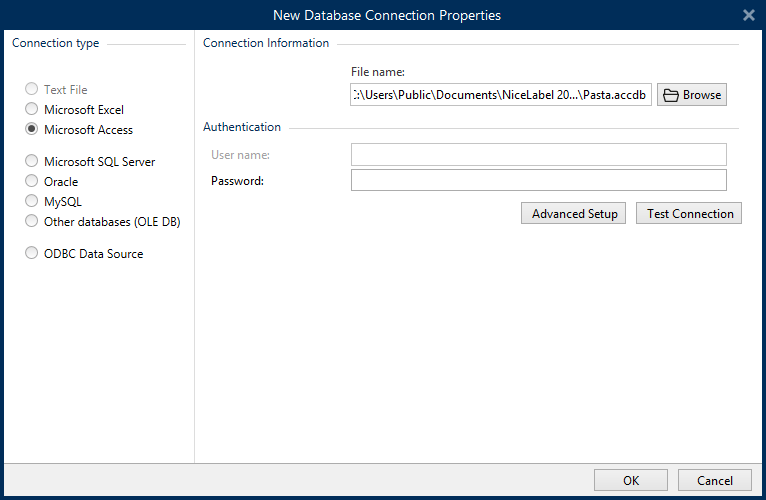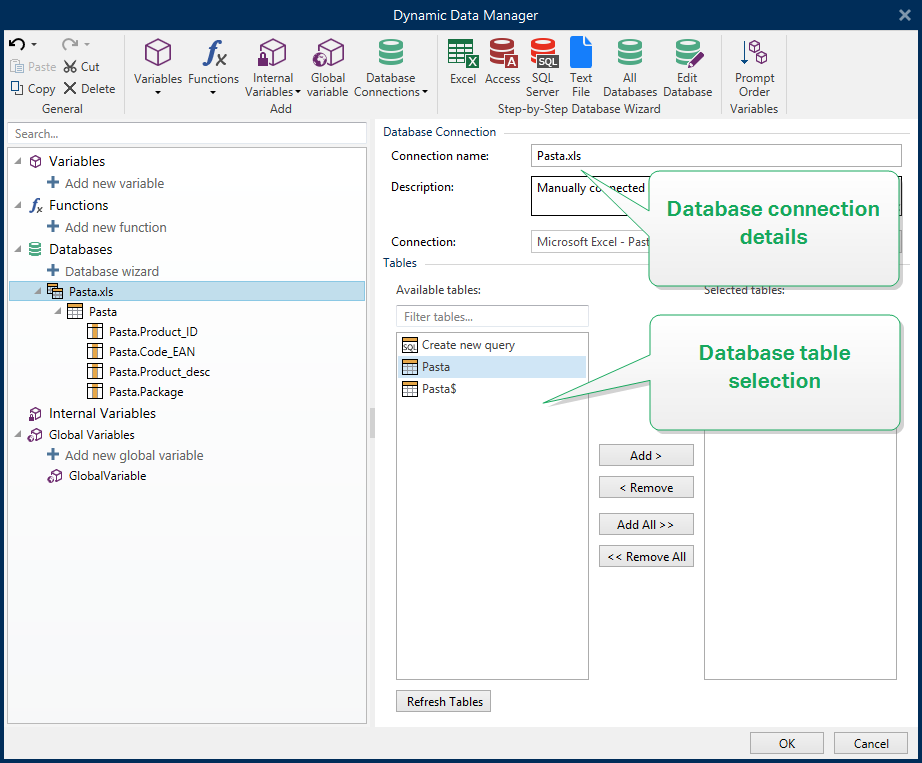Connect to Microsoft Access File
Microsoft Access databases can be used as a dynamic data source for Label Objects
Click your Database Connections button in the Dynamic Data Manager Ribbon and select Microsoft Access as the preferred database type. New database connection properties window opens.
To manually connect an object to an Access file database, complete the below-listed steps.
Step 1: Connection Setup
Connection type group allows you to define the type of database connection.
Connection Information window defines database file details.
File name: defines the database file to be used in the connection.
Authentication group provides the User name and Password for connecting to a protected file.
Advanced Setup: opens the Data Link Properties window. This window allows you to define the connection properties. Data Link Properties is a Windows system dialog – read more about its properties here.
Test Connection: starts a connection testing procedure. It shows if a connection with the database has been established successfully. A confirmation or error message appears depending on the connection status.

Click OK when done. Database properties window appears.
Database Connection group defines the connection name and describes it.
Connection name: defines the name for the connected database file. By default, it displays the filename of the connected file. Insert a new name to make it easy to be found in the Desktop DesignerDynamic Data Explorer.
Description: allows adding additional information and suggestions for the connected database.
Connection: identifies the currently connected database file. To replace the currently connected file, click the Connection Setup button. New Database Connection Properties window reappears – repeat step 1 to connect to an alternative database file.

Step 2: Database Table Selection
Tables group allows you to select which tables of the connected database should be used as a data source.
Available tables: available tables in the selected database.
Selected tables: tables that are used as a data source.
Click Add > or < Remove buttons to add or remove the tables from the Selected fields.
Note
When editing an existing database, a table cannot be removed if used in a script, function, action, or connected to a label
Click OK when done.
Step 3: Configuration of Database Table and Fields
Read about how to configure the connected table Database Table Configuration
Read about how to configure the database fields Database Field Configuration
Click OK when done.